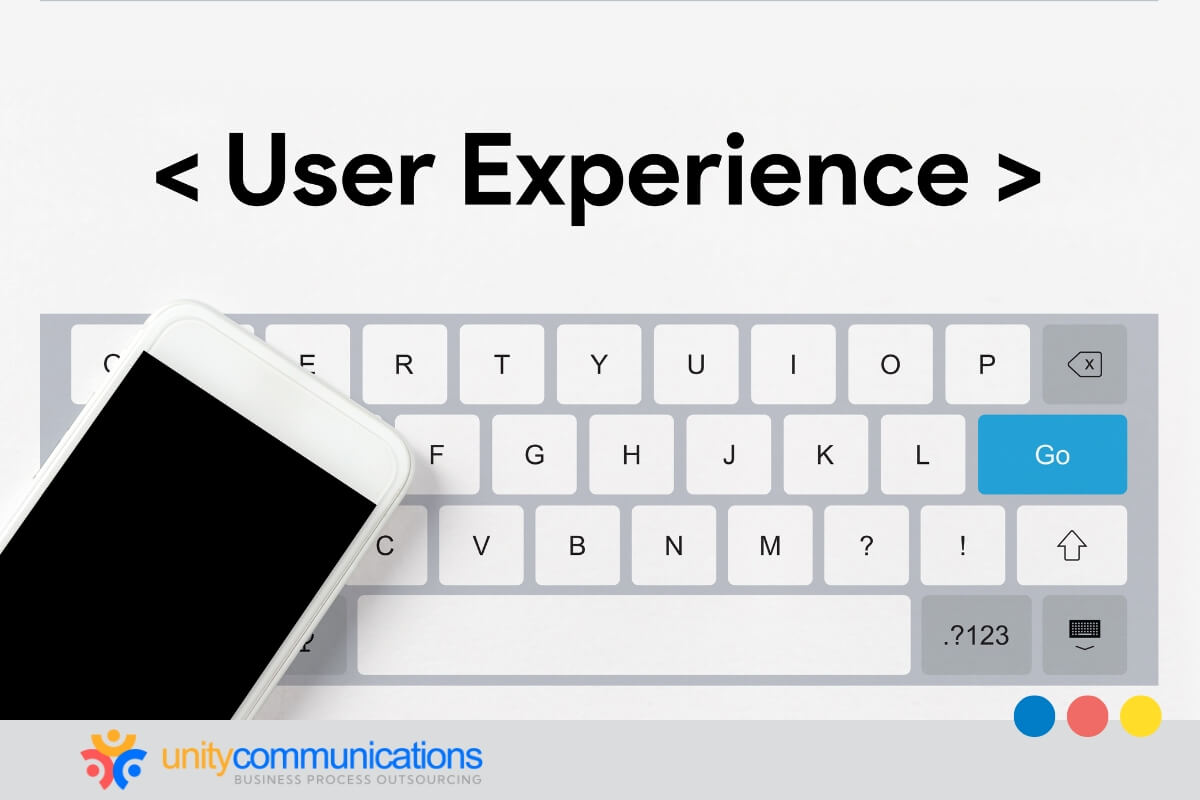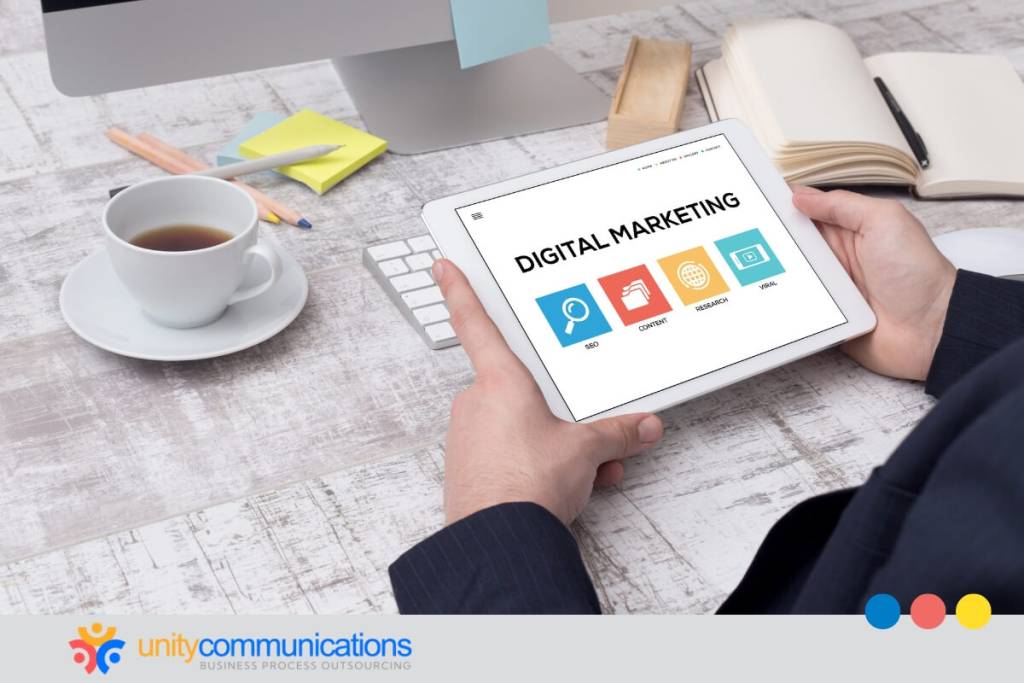Table of Contents
Content is king in the digital age. It drives engagement, builds trust, and establishes authority. In digital marketing, high-quality, relevant content is critical in capturing the attention of target audiences and boosting brand presence.
This article explores the role of content in digital marketing services and the strategies businesses could implement to produce compelling content that drives brand awareness, lead generation, and long-term growth. Keep reading!
Understanding content in digital marketing

Imagine a blog post that seamlessly guides readers to a product’s order page or a video that instills trust in a business’s services within moments. These are just a few examples of how content marketing in the digital age can captivate audiences, foster confidence, and drive tangible results.
Today, understanding the nuances of content marketing is no longer optional. It is a vital strategy for businesses aiming to connect meaningfully with their audiences and stay ahead of the competition.
Here are the benefits of good content in today’s marketing:
- Builds brand authority. High-quality content establishes a business as an industry leader.
- Enhances customer trust. Relevant and valuable content fosters loyalty and long-term relationships.
- Boosts search engine optimization (SEO) performance. Optimized content improves search engine rankings and organic visibility.
- Drives engagement. Engaging content encourages interaction, shares, and a stronger online presence.
- Supports lead generation. Informative content helps attract and convert potential customers.
- Provides value. Useful content meets audience needs, creating a positive brand association.
The importance of high-quality content for brand authority
Trust and credibility position a business as an industry leader and expert. High-quality content is essential for establishing brand authority. It demonstrates expertise, fosters trust, and sets the business apart from competitors.
Here’s how to establish brand authority using quality content:
- Publishing in-depth articles, guides, and research that highlight industry knowledge
- Creating content that solves problems and delivers value to the target audience
- Sharing authentic brand stories to build emotional connections and loyalty
- Using case studies, testimonials, and success stories to back authority claims
- Ranking higher in search engines with authoritative content that attracts organic traffic
- Producing high-quality, relevant content to maintain a strong presence
How content drives engagement and customer retention
Engagement refers to the meaningful interactions customers have with the brand. Meanwhile, customer retention is the ability to keep customers returning over time. Both are crucial for businesses as they build lasting relationships, increase loyalty, and drive sustainable growth.
Here are ways to use content in digital marketing to drive engagement and customer retention:
- Providing valuable information to keep audiences engaged and position the brand as helpful and reliable
- Creating interactive content such as polls, quizzes, and live videos for a more immersive experience
- Personalizing experience as tailored content resonates with individual customer preferences, enhancing loyalty
- Delivering consistent updates to keep the audience interested in the offerings.
- Nurturing relationships using email newsletters and follow-up content to maintain a strong connection with the audience
- Supporting community building through content to spark conversations and create a loyal and engaged community
The role of content in SEO
SEO improves a website’s visibility on search engine results pages (SERPs) to attract organic traffic and generate leads. High-quality, relevant content is vital to effective SEO, enabling businesses to rank higher and attract their target audience.
Create SEO-driven content that sustains organic growth using the following strategies:
- Incorporating targeted keywords to improve search engine rankings
- Providing fresh, regular updates to signal search engines that the site is active
- Earning backlinks from reputable sources, boosting domain authority
- Optimizing user experience with engaging, well-structured content to reduce bounce rates and increase time spent on the site
- Including multimedia elements such as visuals, videos, and interactive features to enhance engagement and SEO performance
- Focusing on search intent to increase relevance and rankings
Using different content formats: blogs, videos, and infographics

Some people prefer watching videos to learn about a product. Some prefer reading how-to guides. Different content formats exist to cater to audiences’ diverse preferences and behaviors. With people consuming information in various ways, businesses must adapt.
Leveraging a mix of formats boosts engagement, maximizes reach, and keeps customers interested in fresh, dynamic ways. The following are the most common content formats in digital marketing:
- Podcasts. Great for delivering in-depth discussions and building a loyal, on-the-go audience.
- E-books. Comprehensive resources that establish authority and are excellent for lead generation.
- Webinars. Interactive and educational sessions that foster real-time engagement with your audience.
- Infographics. Visually appealing summaries that simplify complex ideas and are highly shareable across social media platforms.
- Case studies. Real-world success stories that highlight expertise and build credibility with potential clients.
- Social media posts. Bite-sized, engaging content that fosters quick interactions and drives traffic to primary platforms.
Measuring content performance
Website traffic, one of the most commonly tracked metrics for evaluating content marketing success, offers valuable insights into audience engagement. Measuring performance across various platforms is essential to understanding how content resonates with the audience and aligns with business objectives.
By analyzing key metrics such as traffic, businesses can identify what works, refine their strategies, and maximize their return on investment (ROI). This data-driven approach enables organizations to create more targeted, effective, and engaging content that drives meaningful results.
Here are ways to measure content performance:
- Tracking website analytics using tools such as Google Analytics to monitor traffic, bounce rates, and user behavior
- Analyzing engagement metrics such as likes, shares, comments, and click-through rates (CTR) on social media and websites
- Monitoring SEO performance, including keyword rankings, organic traffic, and backlinks
- Assessing conversion rates to determine how effectively content drives leads, sales, or desired actions
- Gathering audience feedback through surveys, polls, or direct feedback to gauge content relevance and value
- Reviewing ROI to compare content costs against the revenue or leads generated to measure success
Leveraging user-generated content (UGC)
UGC, which includes reviews, photos, videos, and social media posts created by customers rather than brands, is a powerful tool for fostering trust and authenticity. According to the latest data, high-quality reviews were the most influential form of UGC worldwide.
By integrating this and other types of UGC into their marketing strategies, businesses can enhance credibility, encourage community engagement, and build stronger connections with their audience.
Here are ways to use UGC in content:
- Featuring customer reviews and testimonials to highlight positive feedback on the website or social media
- Sharing user photos and videos to showcase real-life usage of products or services across various platforms
- Creating branded hashtags to encourage customers to share their experiences using a specific hashtag
- Running contests and giveaways to motivate users to create and share content in exchange for prizes or recognition
- Repurposing UGC in campaigns by incorporating user content into ads, email campaigns, or blog posts
Different content distribution channels
Choosing the proper content distribution channels is essential for expanding reach, increasing visibility, and driving engagement. Marketers use the following channels to amplify their reach and showcase their expertise:
- Social media. engaging a broad audience with platforms such as Facebook, Instagram, Twitter, and LinkedIn
- Email marketing. directly reaching customers through newsletters or personalized emails
- SEO and organic search. driving traffic through search engines by optimizing content for relevant keywords
- Paid advertising. distributing content through paid ads on search engines or social media platforms
- Influencer marketing. partnering with influencers to expand content reach
- Content syndication. sharing content through third-party websites or platforms to increase exposure
- Website or blog. posting content directly on the site to attract and engage visitors
Future trends in content in digital marketing

The future of content marketing evolves as new technologies and audience behaviors shape how businesses engage with consumers. Staying ahead of emerging trends is essential for brands looking to maintain relevance and achieve impactful results in an increasingly digital world.
Artificial intelligence (AI) for driven content creation and personalization
Sixty-eight percent of businesses have reported improved ROI in content marketing with AI, with 65% achieving better SEO results. As AI-powered tools evolve, they offer support in tasks ranging from brainstorming ideas and drafting outlines to creating complete articles and scripts.
Additionally, hyper-personalization allows AI to customize content based on individual preferences, browsing habits, and even real-time emotional cues, making marketing efforts more precise and impactful than ever.
Rise of short-form video
Fifty-three percent of viewers watch videos to completion, while 66% watch videos under one minute long. As a result, platforms such as TikTok and Instagram Reels will continue to dominate, requiring brands to perfect these short-form video formats to engage viewers quickly.
Additionally, interactive live videos, such as Q&As and behind-the-scenes content, will rise in popularity, offering even more opportunities to capture attention and foster deeper engagement.
User experience (UX) focus and voice search
Content will become more engaging and interactive, incorporating quizzes, polls, augmented reality (AR)/virtual reality (VR) experiences, and personalized content recommendations. Also, smart home products are more popular than ever, currently used in 381 million households. This highlights the increasing integration of technology into daily life.
As this trend grows, voice search is also on the rise, making it essential for content to be optimized for voice queries. This means focusing on concise, natural language that aligns with how people speak and interact with their devices.
Authenticity and trust-building
Authenticity is key to building trust. When customers feel connected to a brand, they are more likely to trust it, significantly increasing their chances of purchasing. As skepticism toward inauthentic marketing grows, brands must prioritize transparency and focus on building meaningful relationships with their audiences.
UCG will be increasingly vital in providing authentic customer-driven content that fosters trust and drives deeper engagement.
How business process outsourcing (BPO) supports content marketing
BPO plays a vital role in content marketing by providing businesses with the expertise and resources to create large-scale, high-quality content. What is BPO? It is the practice of contracting third-party firms to effectively manage non-core processes.
Outsourcing in digital marketing allows companies to tap into specialized knowledge and advanced tools to ensure their content meets the needs of their target audience. By understanding how outsourcing works, they can efficiently handle content creation, SEO, and social media management while focusing on their core operations.
Outsourcing digital marketing management ensures a streamlined, cost-effective approach to content marketing, driving better results with less effort.
The bottom line
Content is crucial in digital marketing. It drives brand awareness, engages audiences, and improves search engine visibility. High-quality, relevant content helps businesses build trust, establish authority, and foster long-term customer relationships.
BPO partners offer professional content marketing services, creating a robust content strategy that resonates with your target audience. Learn more about BPO in content marketing today. Let’s connect!




